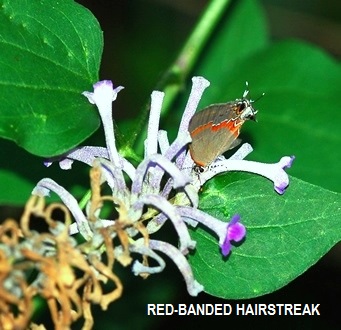It seems like everyone wants a pair of bluebirds to nest in their yard. Consequently, it is not surprising that far more bluebird nesting boxes are sold across the country than those designed to attract other cavity nesting birds. However, for many, whether or not bluebirds will use a box is often a hit and miss proposition. If you are one of those folks that have not been fortunate enough to have bluebirds use a box you provided for them, it might be because bluebirds may not consider your yard to be prime breeding habitat.

In the world of the bluebird, the male selects the breeding territory and the female picks the place where she will nest. In Georgia, male bluebirds may begin scouting for spots to stake a claim on a breeding territory as early as February. These territories can range anywhere from two to twenty-five acres in size.
If a male bluebird decides that your yard is part of his nesting territory, you are half way home. Nesting will not take place until the female also agrees with his choice. Part of this process takes the form of the male carrying nesting material into and out of each potential nesting cavity in the breeding territory. After the female inspects all of the sites, she may actually build her nest in a number of cavities before making a final decision and begin laying eggs.
The eastern bluebird will not nest just anywhere. When it comes to backyards, they prefer those that are open and park like. If trees and shrubs are present, they should be scattered and interspersed with low-growing vegetation.
The male is looking for an area that contains at least one potential nesting site. These can be abandoned woodpecker holes, cavities in wood posts, hollows in trees or nesting boxes. Some territories harbor numerous nesting sites.
In suburban/urban landscapes, bluebirds seek areas that feature open lawns and suitable nearby perches. The perches are used for a variety of purposes such as hunting, defending a breeding territory, from other bluebirds, as well as spotting approaching danger.
Bluebirds prefer to hunt for insects and other prey on or near the ground within a twenty-foot radius of their perch. As such, your yard should have several perches. Power lines and tree limbs serve as ideal perches. With that in mind, trees pruned so that there are no leaves and branches within eight to ten feet of the ground.
Also, the quality of the feeding habitat can be greatly enhanced if a weedy border is maintained around the perimeter of a yard. These areas harbor far more food than vast expanses of manicured lawn.
Water is also a critical component of a bluebird’s breeding territory. If a stream or pond is not nearby, install and maintain a birdbath. When selecting a bath, choose one that is an inch to an inch and a half deep. Such baths are used for both drinking and bathing.
If this description of ideal backyard bluebird breeding habitat does not describe your yard, do not despair; other cavity nesting birds need places to nest too. My recommendation is to go ahead, put up a box, and see what happens. It is possible that another bird such as a brown-headed nuthatch, tufted titmouse, Carolina wren, or Carolina chickadee will find your backyard to be perfect for its needs.
Like this:
Like Loading...
 From the handful of reports that I have received to date, it appears that the birds are late this year. In my case, a bird finally arrived in my backyard nine days later that the typical March 18 arrival date.
From the handful of reports that I have received to date, it appears that the birds are late this year. In my case, a bird finally arrived in my backyard nine days later that the typical March 18 arrival date.





